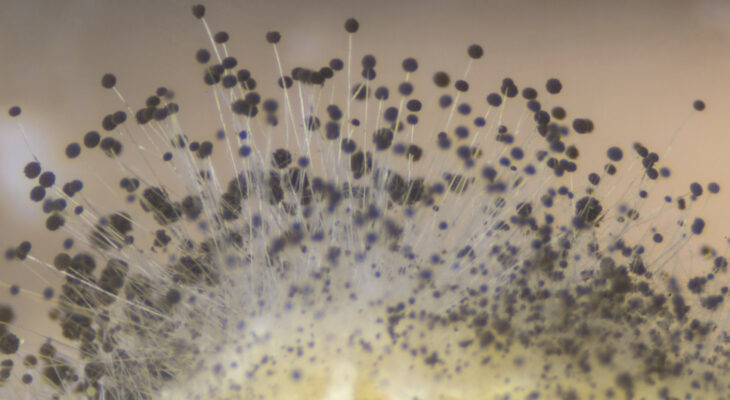In the past few years, there has been growing awareness about mold illness, also known as Chronic Inflammatory Response Syndrome (CIRS). Here we will discuss the major differences between molds, mold spores, and mycotoxins and why some individuals are more susceptible to mold illness than others. If you don’t know what mold is and how it can cause serious health complications, continue reading this mold illness guide until the end.
What Are Molds?
Molds are fungi that are present in both indoor and outdoor environments. Molds reproduce and spread by making spores, and they need moisture to survive. Although there is no clear evidence regarding how many mold species exist, estimates suggest that they range from tens of thousands to over three hundred thousand.
Humans get exposed to mold when they inhale mold spores. Generally, mold spores are not harmful; exposure to higher levels can cause symptoms that mimic cold. In addition, mold can trigger allergies or asthma symptoms in some people. If you are experiencing any of these symptoms, you must visit a mold doctor immediately.
How Long does it Take to Get Sick if Exposed to Mold?
If you are concerned about health complications associated with mold, you might wonder how long it takes to get sick from mold exposure. The short answer is that it depends on several factors.
Exposure to mold for a limited time might depict no symptoms at all. The time it takes for the symptoms to appear depends on various factors, including your environment and overall health.
The following factors will help you get a better idea of the timing of mold exposure.
· Sensitivity
Each individual reacts to mold differently. How quickly you develop symptoms of mold exposure depends on your personal sensitivity.
If a person has a mold allergy, his immune system thinks certain mold spores are invaders or allergens. So, when a person inhales these spores, his body reacts by triggering sneezing or nasal congestion. Depending on your body, you may experience these symptoms right after exposure to mold.
However, if you do not have mold allergy, one-time mold exposure may cause no symptoms. But sometimes, you may experience symptoms even if you are not allergic. So, responses are different for each person and depend on their sensitivity and overall health.
· Amount of Mold Exposure
The amount of mold exposure determines how long it takes for the symptoms to appear. Generally, higher amounts of mold exposure cause negative health effects. Hence, the more the mold is present, the more you are likely to get exposed to it and the more you are likely to develop symptoms.
For some individuals, one-time exposure to a small amount of mold isn’t enough to cause symptoms. However, even a small amount can trigger symptoms for others who are sensitive to mold. However, the appearance of symptoms also depends on your body.
· Duration of Mold Exposure
Duration of mold exposure is an important factor too. The longer you are exposed to mold, the more spores you will inhale; hence, your overall mold exposure will increase. If mold exposure lasts a few seconds to minutes, you may not experience any symptoms.
However, the symptoms might develop rapidly if you are exposed for a long time. So, it’s again dependent on your sensitivity.
· Proximity to Mold
Your proximity to mold is important, too, because proximity affects how much mold you are exposed to. For example, a person is likely to develop symptoms quickly if he is directly exposed to mold. This mostly happens during cleaning or touching moldy stuff.
So, if you are allergic or sensitive to mold, you must avoid direct contact with mold. Otherwise, you are most likely to develop symptoms.





